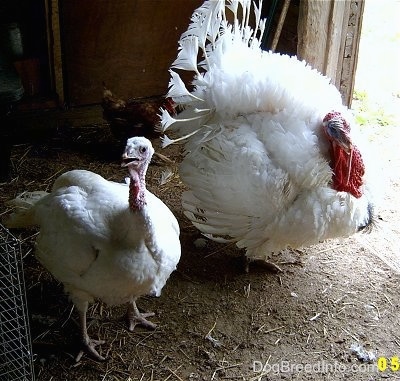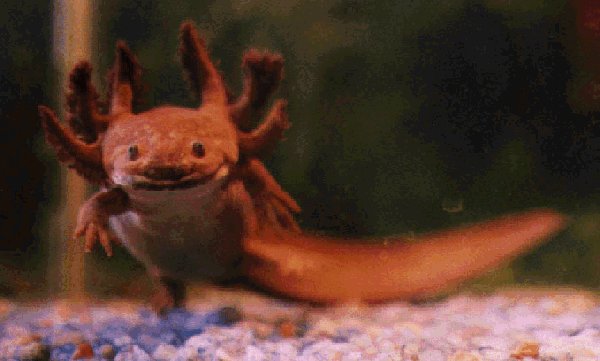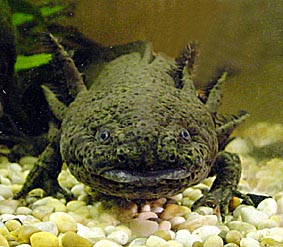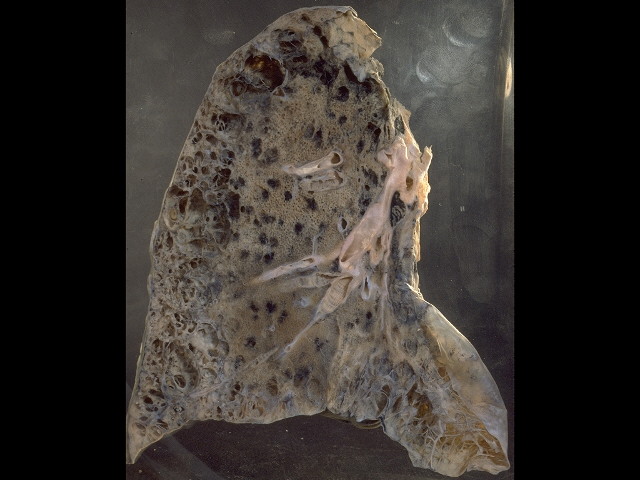Last night, one of my favorite movies was on TV,
Night of the Iguana. It's one of those 1960's black and white classics that just tear you to pieces. I think it's fantastic. Or, I should say, excellent.
It's based on a Tennessee Williams play, for one thing. It stars Richard Burton as the just-shy-of-defrocked Rev. Dr. T. Lawrence Shannon, who has been reduced to giving cheap bus tours of Mexico. Dr. Shannon is being hounded by a dim but beautiful and excitable young girl, who is under the aegis of a harpy named Judith Fellowes (played by Grayson Hall). To escape them and find some solace, Dr. Shannon runs to a seaside resort operated by the dynamic Maxine Faulks (Ava Gardner). While he is trying to duck Ms. Fellowes' wrath, the unflappable but highly sympathetic Hannah Jelks (Deborah Kerr) arrives, flat broke, with her 97 year-old grandfather who also happens to be a poet. There are also two Mexican cabana men, a.k.a. "beach boys," who go around playing maracas and trapping an iguana. You can see the possibilities. It's about people trying to endure the spooks, the blue devils, the nights of iguanas, trying to find some kind of solace and comfort in other people. It's magnificent.

Some stills from
Night of the Iguana(Photo from
some French movie site)
I decided, this time through, that I really liked Ava Gardner. She gets pretty dramatic in this role, flips her hair around quite a lot, but it suited her character. In this role, she's brash yet comfortable, walks around barefoot, and is equally at ease whether she's pushing a cocktail cart, shaving a man's face, or dropping headless dogfish into a pot of boiling water. I decided I wanted to watch another movie she was in.
But first, a few facts about her life. Then I'll list some movies and let you know which one I think I want to watch next.
- She was born in 1992 on a tobacco farm in Brogden, North Carolina. Hence, her accent.
- She was the youngest of seven children. One sister, whose given name was Beatrice, was actually called Bappie. Another sister was named Elsie Mae.
- She got a contract with MGM based strictly on her photo, with zero acting experience.
- She married Mickey Rooney in 1942, but by 1943, they were divorced.
- Later Howard Hughes pursued her persistently, though she continued to refuse him. Finally, to get her point across, she hit him over the head with a candlestick.
- She had a lot of one-liner roles from 1942-1945, but then in 1946, Universal was allowed to borrow her from MGM, and she starred in The Killers, starring Burt Lancaster and written by Ernest Hemingway.

Gardner looking sultry in
The Killers(Photo from The Palace)- In the meantime, she had married big band clarinetist Artie Shaw in October 1945, but a year and a week later, they were divorced.
- MGM hung onto her because she became very popular, but they gave her a lot of mediocre scripts. This contributed to her opinion of herself as not that talented an actress.
- However, when she started working with the renowned director John Ford, her talents were allowed to surface in Mogambo in 1953 and Bhowani Junction in 1956.
 (Photo from Cine Clasico)
(Photo from Cine Clasico)- She learned flamenco dancing for The Barefoot Contessa, which was released in 1954. She liked flamenco so much, she kept it up. Often, instead of sleeping, she flamenco'ed most of the night.
- She had married Frank Sinatra in 1951. He had gotten a hard-fought divorce from Nancy, after lots of hoo-hah in the press and resistance from the Catholic Church. Early in their marriage, Sinatra was broke, and she gave him money to buy presents for his children. Since their relationship had begun as an affair while he was still married to Nancy, they both suffered from jealousy and things were usually pretty rocky between them.

Gardner & Sinatra
(Photo from Divas - The Site)- She became increasingly disturbed by what was happening in her marriage and in her Hollywood life in general. In 1955, after filming The Sun Also Rises, she moved to Spain. Believing she and Sinatra could not raise a child since they did not seem able to take care of each other, she had an abortion. Shortly thereafter, they were divorced.
- In 1959, she was in On the Beach with Gregory Peck. They had already been in several films together, and the two of them formed a friendship that lasted the rest of her life.
- After The Night of the Iguana in 1964, most of her roles were pretty un-memorable, including her performance as Sarah in The Bible. She did do her own stunts in Earthquake in 1974, but you can tell by the title what kind of movie that was.
- She found herself in tax trouble with the Spanish government in 1968, and moved to London, where she lived for the next 22 years until her death.
- In 1989, she suffered a stroke which left her partially paralyzed and bedridden. She lived with her long-time housekeeper, Carmen Vargas, and her Welsh corgi, Morgan.
- After she died in 1990, her friend Gregory Peck took in both Vargas and the dog.
 (Photo from Lenin Imports)
(Photo from Lenin Imports)Here are some quotes from her:
- "When I lose my temper, honey, you can't find it any place."
- "I haven't taken an overdose of sleeping pills and called my agent. I haven't been in jail, and I don't go running to the psychiatrist every two minutes. That's something of an accomplishment these days."
- "Nobody ever called it an intellectual profession."
- "I wish to live until 150 years old but the day I'll die, I wish it to be with a cigarette in one hand and a glass of whisky in the other."
Okay, now for some of the movies of hers that intrigue me:
- The Killers
- Two hit-men kill a gas station attendant called the Swede. An insurance investigator looks into the Swede's past and discovers "treachery and crime," as well as the mysterious Kitty Collins.
- I've heard good things about this movie off and on for some time. I just purchased a copy on VHS not too long ago (not knowing she was in it), so this might be the one I watch next, just because it's readily available.
- On the Beach
- Made in 1959, the movie is set in 1964, or The Future, and a nuclear war destroys just about everything, except Australia. A submarine captain, Dwight Lionel Towers (Gregory Peck), has lost his family when he encounters the beautiful Moira Davidson. They begin to fall in love, but the radiation and more war is on its way. Oddly, Fred Astaire is in this, too.
- I've seen many references to this movie before, too, but this sounds a little too bleak for my taste at the moment.
- The Hucksters
- Starring the King, Clark Gable, this film combines the post-World War II fascination for advertising with a love triangle. Victor Norman, just back from the war, wants a job as an ad man. He decides to get a war widow (Deborah Kerr) to endorse Beautee Soap, which gets him the job. He starts to fall for her, but he is also pursued by the younger Jean Ogilvie (Gardner). Whom will he chose?
- It might be interesting to see that contrast between Deborah Kerr and Ava Gardner in another picture. And it might also be interesting to see Gardner and Gable together. Ooh, and Sydney Greenstreet is in it, too, and I always like his strange brand of creepiness. This is a close contender, but it might be hard to find.
- Mogambo
- Also starring Clark Gable, this time as Victor Marswell, the owner of a big game hunting company. He's about to take anthropologist Donald Nordley and his wife Linda (Grace Kelly) on a trip to document gorillas, but first Marswell meets Eloise "Honey Bear" Kelly (Gardner). They get after it, but then when the Nordleys show up, the dimwit Mrs. Nordley decides she likes Marswell, too. Which woman will win?
- I wanted to see what this was about, just because John Ford was the director and apparently much was made of this. But I don't really go for those safari-type movies very much (which also rules out The Snows of Kilimanjaro, in which Gardner also appeared).
- The Sun Also Rises
- Another Hemingway work. American journalist Jake Barnes, wounded in World War I, hangs out in Paris and Spain with his pals, the once-rich drunk Mike (Errol Flynn), drinking buddy Bill Gorton (Eddie Albert), and his unrequited love Lady Brett Ashley (Ava Gardner).
- The book is tremendous. The film, maybe not so much. I've seen it once, at least in part. It includes a scene I have never forgotten, of a pudgy Errol Flynn pretending to be--or perhaps actually--drunk, staggering in the middle of a bull fight ring, waving a bad check and asking who will take it. I'd like to see it again at some point, if only for this scene. Somehow Ava Gardner's lush screen presence doesn't match up well with my idea of Brett, though.
All in all, it looks like I'll probably watch
The Killers next, and then maybe if I can get my hands on it,
The Hucksters. It is going to be shown at 4:30 in the morning on Turner Classic Movies on April 14, but I doubt I'll be up at 4:30 in the morning on Good Friday.
Or I might watch another Tennessee Williams play-turned-movie, perhaps
The Glass Menagerie, which I've never seen.
Want to see a movie of hers for yourself? Check out
TV-Now's schedule of Ava Gardner's movies on TV.
Sources
IMDB, Ava Gardner
The Ava Gardner Museum
The Life of Ava Gardner
















